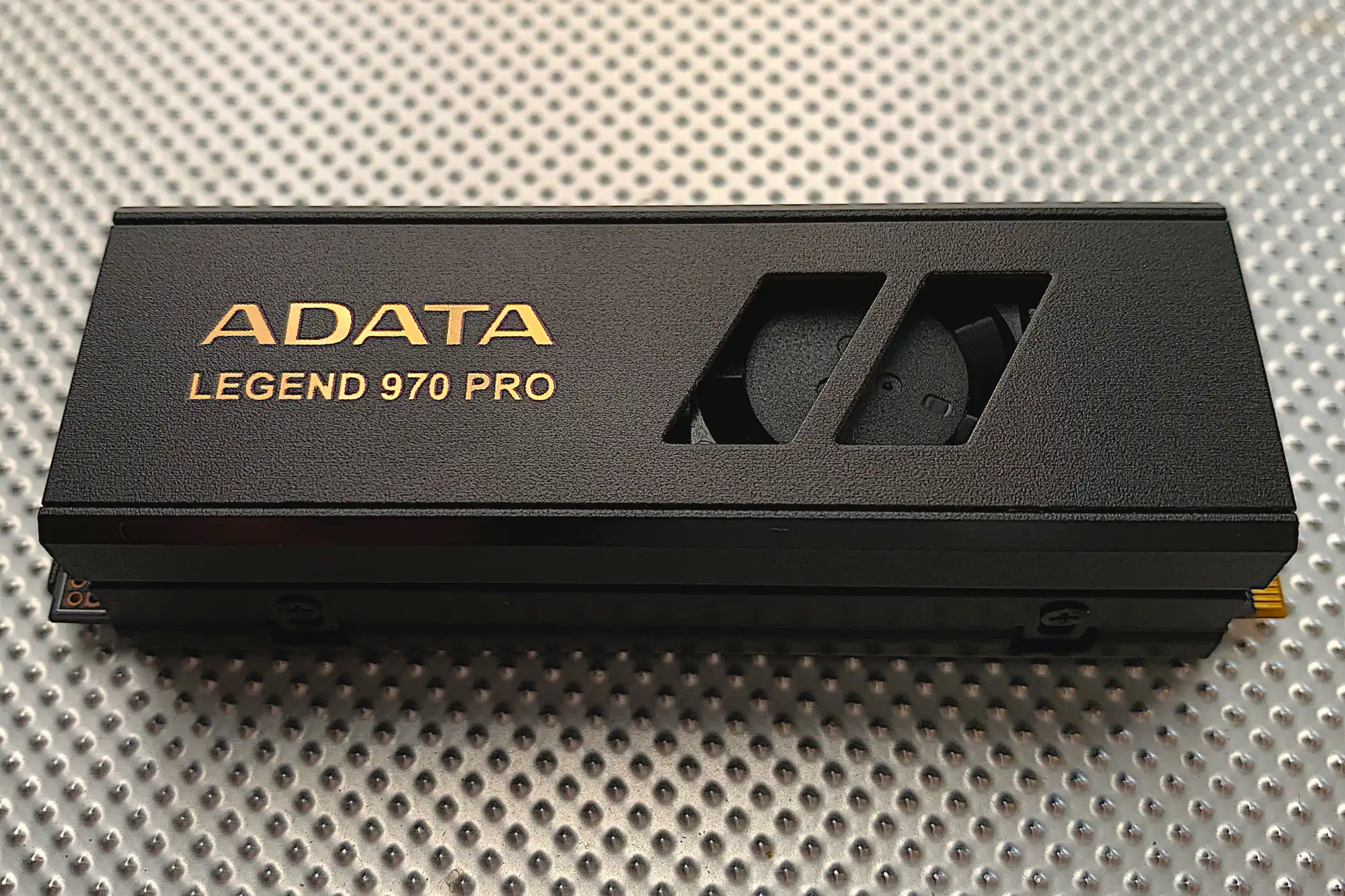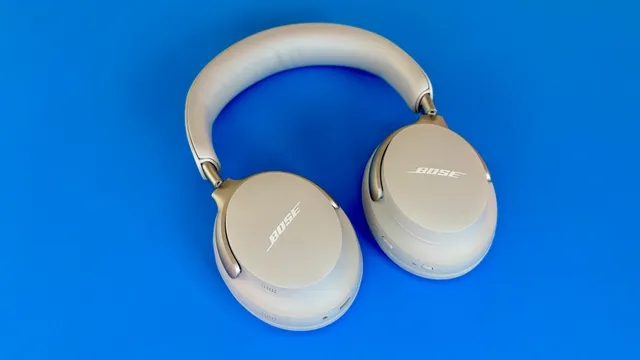With a fan-cooled heatsink, this top-shelf SSD delivered some record-setting results, as well as some middling ones.
Best Prices Today: Adata 970 Pro NVMe SSD
Adata makes very competitive SSDs, such as the Adata 970 I reviewed last fall. The drive maker stays that course with 970 Pro, while straying from the norm in a couple key ways.
This SSD’s test results were a generally excellent-yet-mixed bag — it aced the 450GB write and multiple-queue CrystalDiskMark 8 tests, but slowed during the 48GB transfers and single-queue exams.
What are the 970 Pro’s features?
The 970 Pro is your standard 2280, NVMe M.2 PCIe 5.0 SSD. One way it varies from the norm, and presumably earns its “Pro” moniker, is with its large heatsink cooled by a fan. You can see the power connector for the fan, as well as the rather beefy heatsink in the image below.
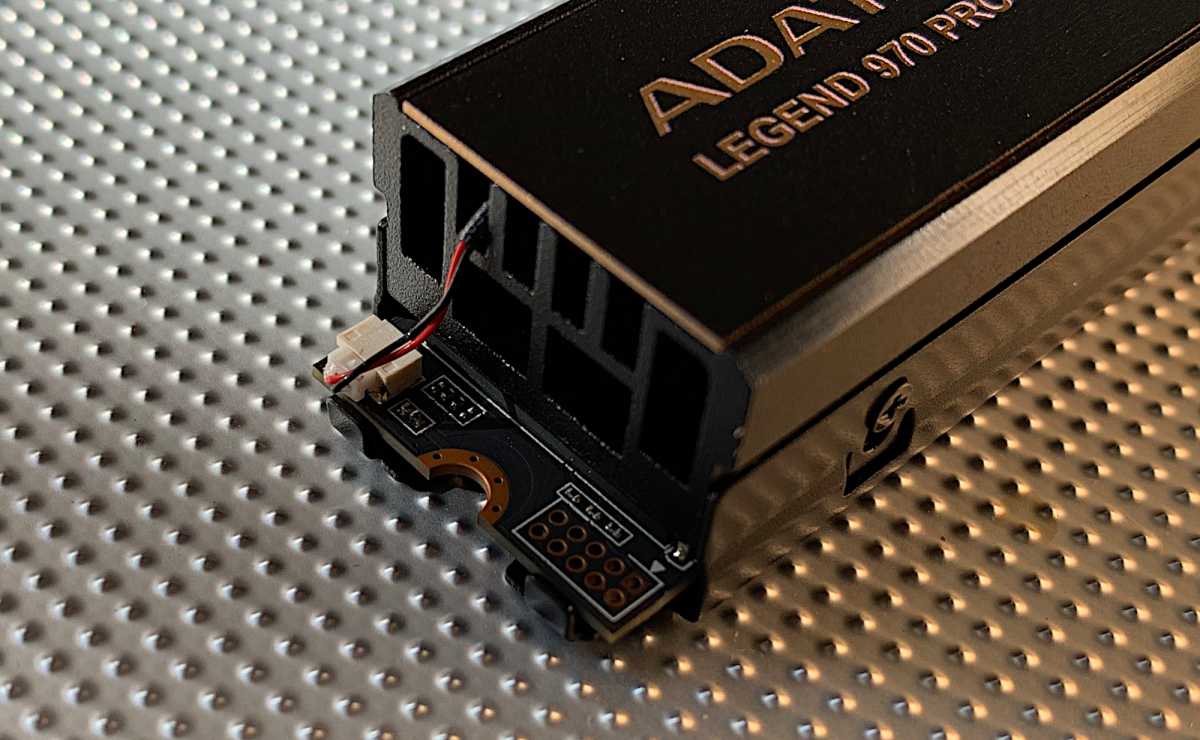
The 970 Pro also differs from the no-Pro 970 by using an InnoGrit IG5666 controller (as opposed to a Phison PS5026 E26) and 232-layer TLC NAND. Like the straight 970, it’s a DRAM design, meaning the secondary cache is on-drive, as opposed to the drive using your system’s DRAM for cache, as in a Host Memory Buffer (HMB) design. The distinction is notable in the 970 Pro’s comparatively fast random performance numbers. (HMB designs are very fast with large sequential transfers, but slow with random ops).
Adata’s warranty on the 970 Pro is for five years, abridged by a 740TB per 1TB of capacity TBW (terabytes that my be written) rating. 740TBW is a generous step up from the 600TBW per 1TB of capacity we see with most drives.
How much does the 970 Pro cost?
The 2TB 970 Pro we tested costs $299.99 on Adata’s site (it’s not yet available on Amazon). There will be 1TB and 4TB versions as well, but prices for those have not been announced.
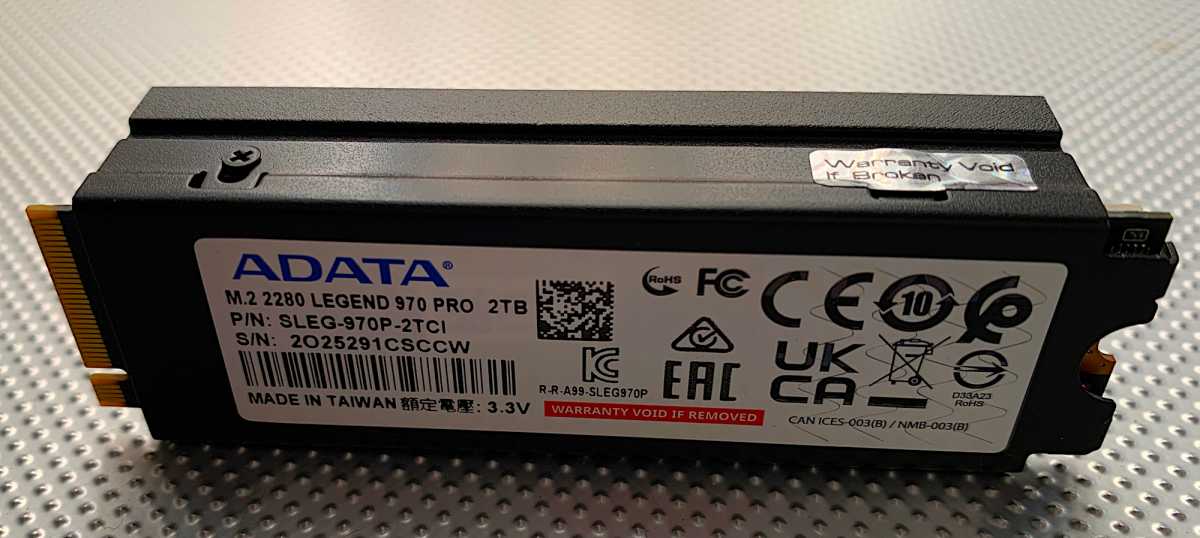
How fast is the 970 Pro?
Overall, the 970 Pro was very quick, but the performance was also somewhat uneven. It was a bit slow (for Gen 5) with the 48GB files and hell on wheels with the 450GB file write; mediocre for PCIe 5.0 with single queues, and top-notch when multiple queues were in play. That’s a bit odd as the 450GB write test, which the drive aced, is a single-queue operation.
Also, I didn’t quite see the 14GBps that Adata advertises, though the word through the grapevine is that the very latest Intel systems might just deliver that kind of performance.

The 970 Pro’s CrystalDiskMark 8 random performance maintained greater equilibrium — on par with the Legend 970, Corsair MP700 Pro, and Seagate FireCuda 540 PCIe 5 competition. In other words, 4K performance was fast both with queues and without.
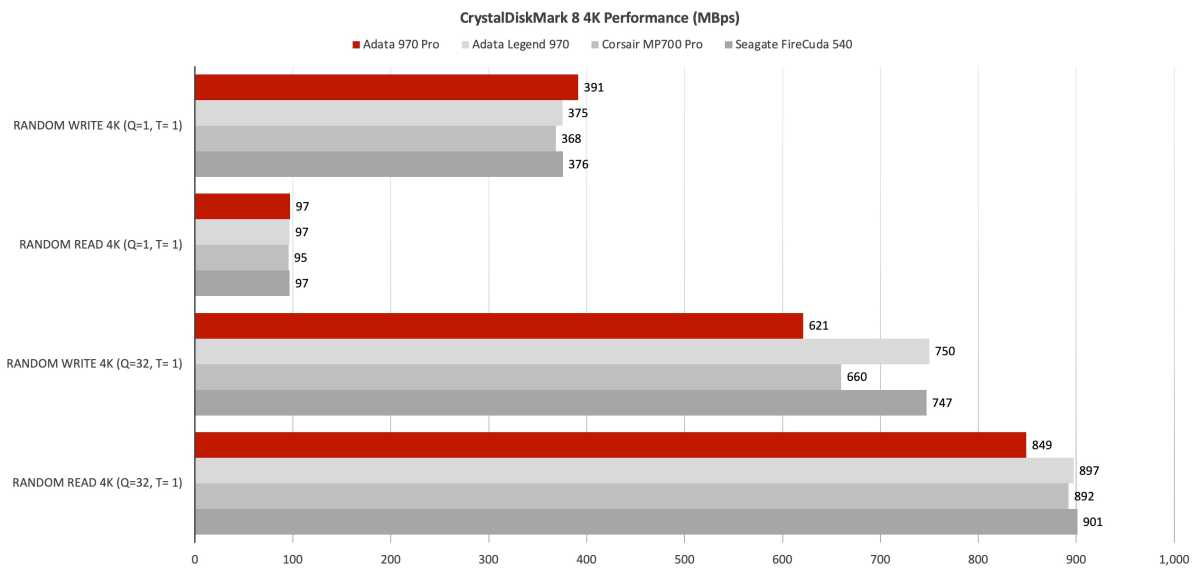
While the 970 Pro wasn’t slow in our 48GB transfers, there are a lot of drives that are faster. Including some host memory buffer (HMB/DRAM-less) drives.

On the other hand, the 970 Pro was the fastest 450GB write time I had seen at the time of testing, though one SSD has surpassed it since. Regardless, you can hardly complain about 2 minutes, 13 seconds.

Overall, the 970 Pro delivers very good performance. Especially when a lot of data is being written sequentially. However, it’s merely middle of the top-shelf pack in many areas.
Should you buy the Adata 970 Pro?
The Adata 970 Pro is a great drive, but it’s competing against similarly priced SSDs that are also great, and even better. Keep in mind that heatsinks generally raise the price of an SSD, so if you don’t need one (many motherboards have their own), you can save a few bucks on an alternative purchase.

